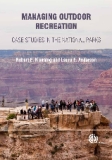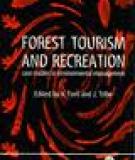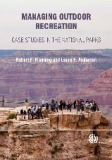Tài liệu Thư viện số
- Công nghệ thông tin (2035 )
- Điện tử viễn thông (1147 )
- Quản trị kinh doanh (1344 )
- Kế toán (1037 )
- Môi trường (991 )
- Du lịch (870 )
- Kiến trúc (432 )
- Xây dựng (1090 )
- Ngoại ngữ (306 )
- Y dược (1399 )
- Khoa học tự nhiên (937 )
- Khoa học xã hội (520 )
- Lý luận chính trị (588 )
- Sau đại học (243 )
- Tài liệu tham khảo khác (252 )
Danh mục TaiLieu.VN
- Mẫu Slide Powerpoint
- Luận Văn - Báo Cáo (344720)
- Kinh Doanh Marketing (65512)
- Kinh Tế - Quản Lý (48934)
- Tài Chính - Ngân Hàng (55898)
- Công Nghệ Thông Tin (142209)
- Tiếng Anh - Ngoại Ngữ (47066)
- Kỹ Thuật - Công Nghệ (134345)
- Khoa Học Tự Nhiên (107174)
- Khoa Học Xã Hội (82451)
- Văn Hoá - Nghệ Thuật (54408)
- Y Tế - Sức Khoẻ (173915)
- Nông - Lâm - Ngư (62504)
- Kỹ Năng Mềm (29016)
- Biểu Mẫu - Văn Bản (27610)
- Giải Trí - Thư Giãn (51994)
- Văn Bản Luật (198854)
- Tài Liệu Phổ Thông (402015)
- Trắc Nghiệm Online (213578)
- Trắc Nghiệm MBTI
- Trắc Nghiệm Holland
Managing outdoor recreation case studies in the national parks
Outdoor recreation continues to grow in popularity in the United States and around the world. Perhaps this is best manifested in the nearly 300 million annual visits to the US national parks. While we should celebrate this popular interest in parks and related areas, it also presents the challenging and increasingly urgent issue of how to manage outdoor recreation in ways that
protect the integrity of park resources and the quality of the visitor experience. These can be affected in many ways, and it is imperative that impacts be minimized. While parks are established to provide opportunities for outdoor recreation, they must also be protected. Again, the US national parks offer a quintessential example; the 1916 Organic Act creating the US National Park Service dictates that national parks are to be managed “in such manner and such
means as will leave them unimpaired for the enjoyment of future generations.”
protect the integrity of park resources and the quality of the visitor experience. These can be affected in many ways, and it is imperative that impacts be minimized. While parks are established to provide opportunities for outdoor recreation, they must also be protected. Again, the US national parks offer a quintessential example; the 1916 Organic Act creating the US National Park Service dictates that national parks are to be managed “in such manner and such
means as will leave them unimpaired for the enjoyment of future generations.”
Từ khóa: Managing outdoor recreation, park resources, cultural resources, quản lí tài nguyên, kinh tế du lịch, kinh tế xã hội
258 p trinh 27/09/2012 249 13




